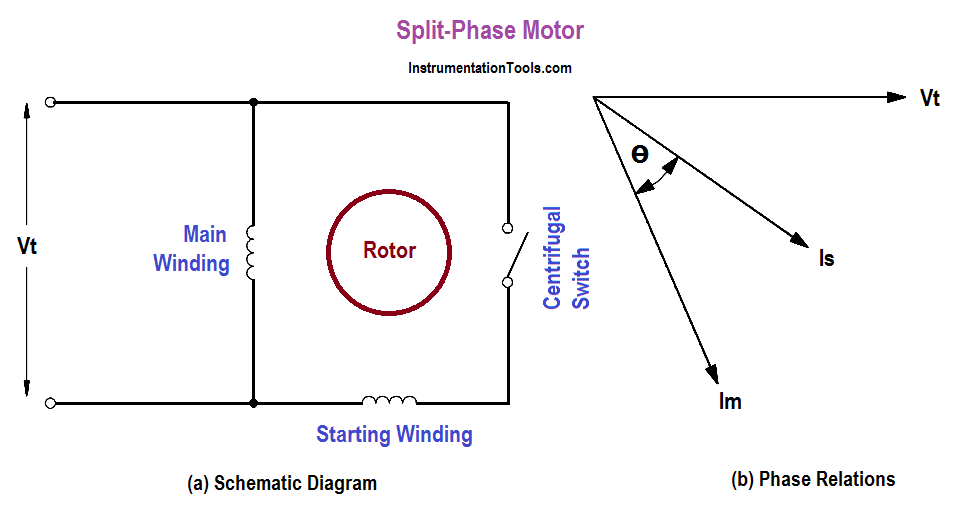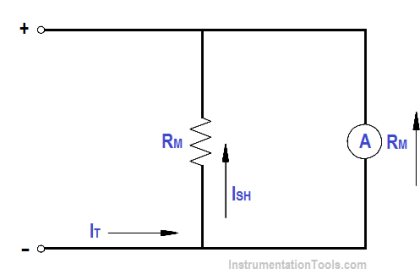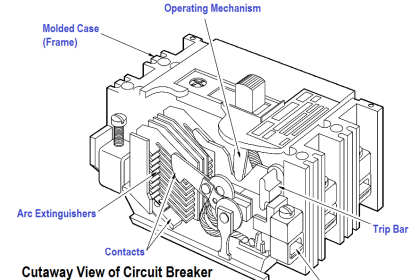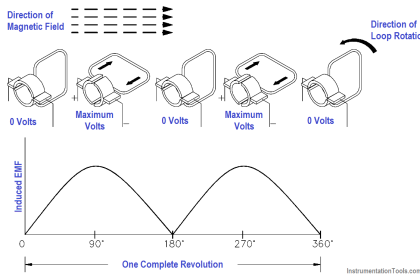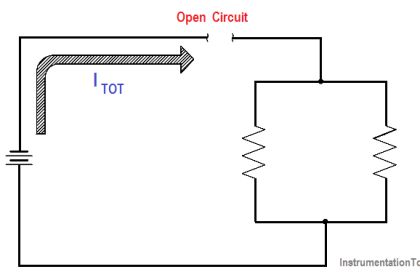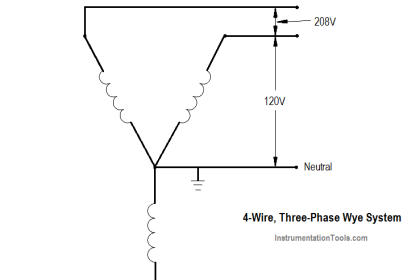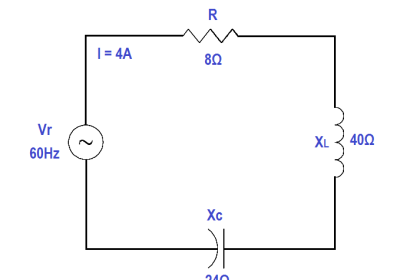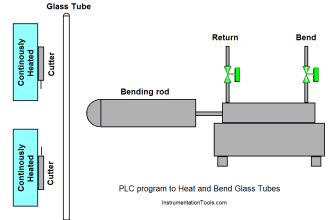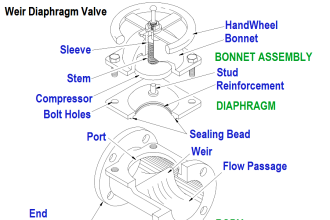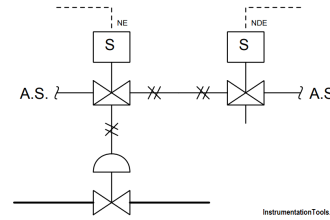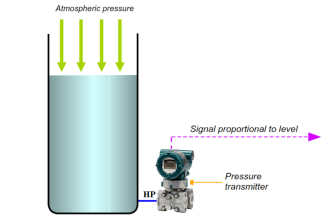If two stator windings of unequal impedance are spaced 90 electrical degrees apart and connected in parallel to a single-phase source, the field produced will appear to rotate. This is called phase splitting.
In a split-phase motor, a starting winding is utilized. This winding has a higher resistance and lower reactance than the main winding (below Figure). When the same voltage VT is applied to the starting and main windings, the current in the main winding (IM) lags behind the current of the starting winding IS ( as shown in Figure).
The angle between the two windings is enough phase difference to provide a rotating magnetic field to produce a starting torque. When the motor reaches 70 to 80% of synchronous speed, a centrifugal switch on the motor shaft opens and disconnects the starting winding.
Single-phase motors are used for very small commercial applications such as household appliances and buffers.
